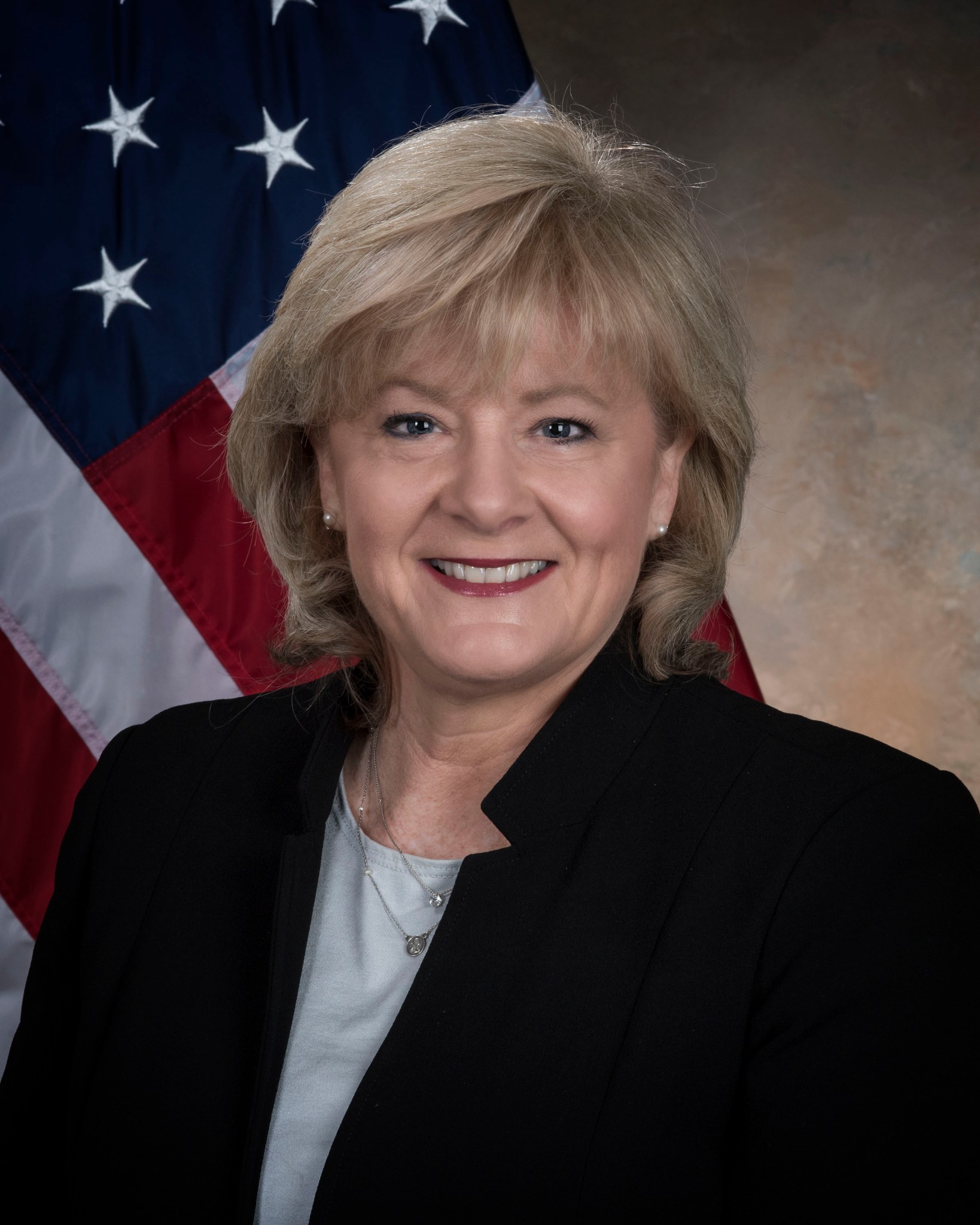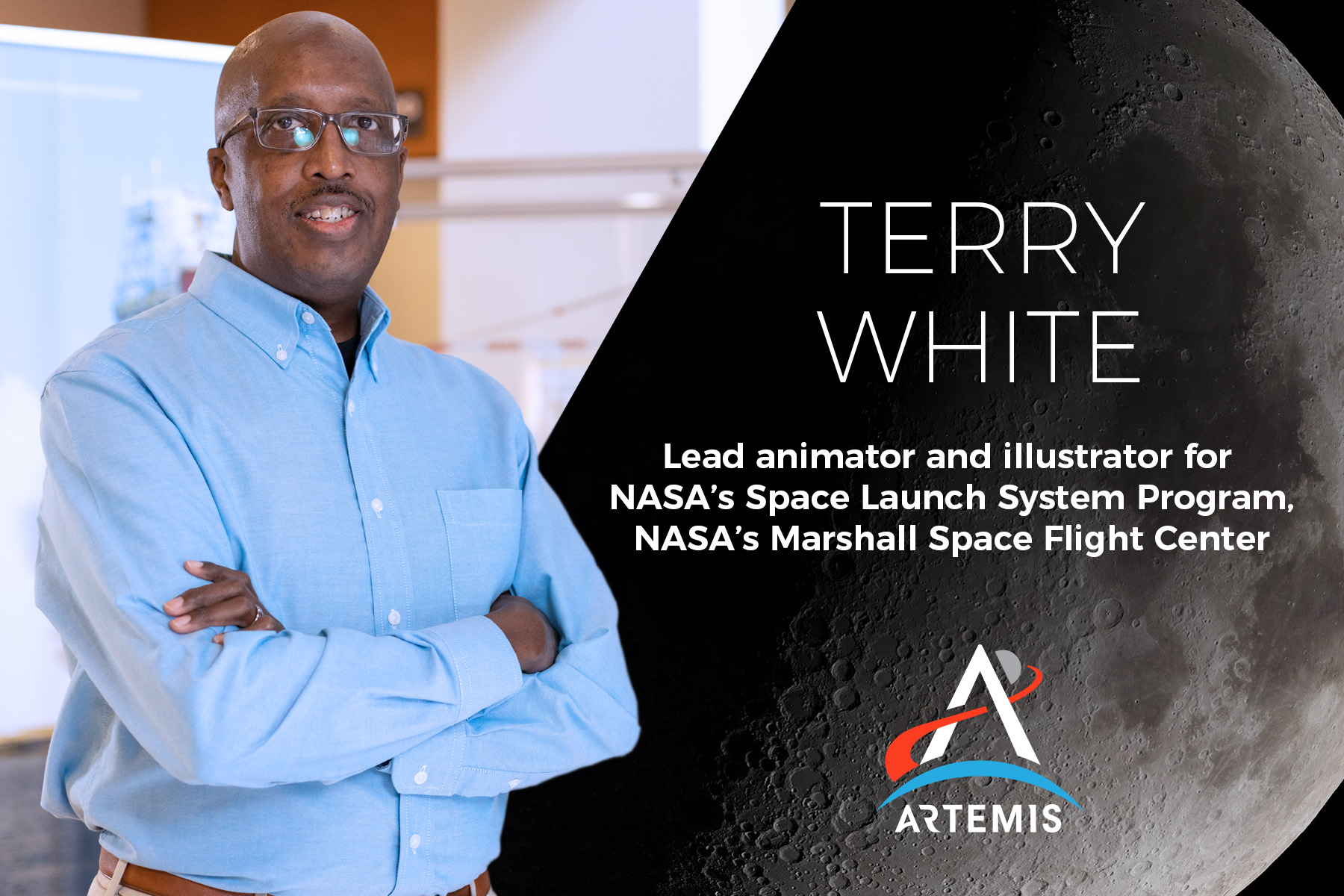In This Week’s Star
- Director’s Corner: Artemis I Mission is Just the Beginning
- NASA Prepares for Space Launch System Rocket Services Contract
- NASA Completes Test Firing of Future Artemis Booster Motor
- Take 5 with Dr. Ruth Jones
- I am Artemis: Terry White
- Jacobs’ Steve Arnette Discusses Corporate Culture of Safety, Norman Thomas Presented Golden Eagle Award
Director’s Corner: Artemis I Mission is Just the Beginning
Being at the wet dress rehearsal at Kennedy Space Center last month has left me feeling reinvigorated knowing that the launch of Artemis I is imminent. I love being back on-site at Marshall, talking with people who are also eager to see the Space Launch System fly for the first time and years of hard work coming to fruition. But our center’s story does not end with Artemis I, and I am so proud that Marshall will be at the forefront of the Artemis missions which will land the first woman and first person of color on the Moon.
We accomplished so much with the wet dress rehearsal test, and the next time we see the rocket on the pad will be for launch, and the agency is targeting a launch opportunity in late August. Beyond Artemis I, there has been tremendous progress made on hardware for future Artemis missions. At Michoud Assembly Facility, teams recently joined the rocket’s core stage for the Artemis II forward assembly, and this fall, the engine section will be integrated to structurally complete the core stage. For Artemis III, the SLS Program has hardware complete or in work for every element of the Block 1 vehicle for the Artemis III flight – the first lunar landing since 1972!
These early Artemis missions will set the stage for a new era of deep space exploration, leading to human missions on Mars and science missions exploring the solar system. We are on the precipice of building a path for long-term exploration success for SLS and for our center. While we are focused on flying Artemis I, we realize it is time to begin looking forward – at the next steps beyond development – and start the serious planning for the future.
As part of that planning, NASA announced this week that we will begin transitioning the contract for SLS hardware production and long-term operations to a services contract model that will begin after the Artemis IV mission. As SLS moves to operational production after Artemis IV, NASA will need Marshall’s talented workforce to provide important oversight of flight certification of follow-on missions and development of new systems – including landers, habitats, advanced propulsion, and other critical capabilities – required to meet agency goals. Sustainable lunar exploration and pushing the boundaries of science and technology will require the best of Marshall’s team, and we will continue to leverage our unique capabilities, expertise, and experience for all the current and future endeavors supporting the agency.
Our center will remain a global leader in exploration, science, and technology development by building on our strengths – habitation systems, landers systems, and advanced space transportation systems. Those strengths have always been fundamentally linked with launch propulsion expertise, allowing us to support a full and diverse slate of science, technology, and exploration programs and projects. Along with supporting Artemis, Marshall is working on some of the most exciting missions for the agency, including the Imaging X-ray Polarimetry Explorer and the Mars Ascent Vehicle.
Innovation and technology development are the cornerstones of Marshall’s capabilities. That has been true for 60 years, and Marshall leader are doing everything they can to ensure our center remains the world’s premier design and development center for the next 60 years.
We have a clear strategic vision for Marshall’s future, and we remain laser-focused on the upcoming Artemis I launch. Being at Kennedy and seeing the fully assembled and integrated rocket on the pad reminded me of the importance of what we are doing for the nation’s space program, and I am in awe of everything you have achieved to enable our nation to be one step closer to launch.
Keep up the hard work, stay safe, and have a wonderful summer!
Jody Singer
Marshall director
NASA Prepares for Space Launch System Rocket Services Contract
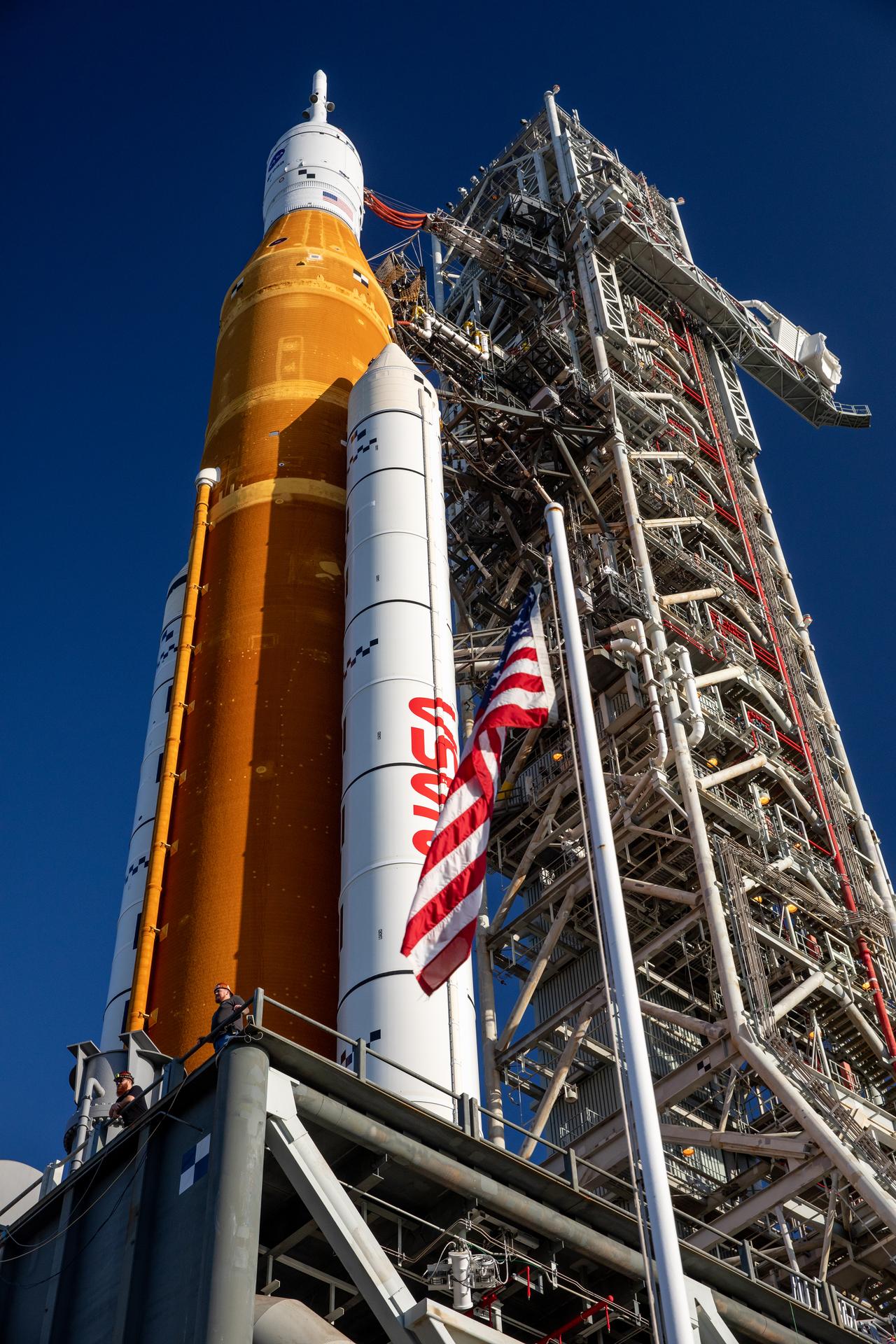
As NASA prepares for the first integrated flight test of the Space Launch System (SLS) rocket and the Orion spacecraft to the Moon this summer as part of Artemis, the agency is moving toward a services contract model for long-term SLS hardware production and operations to reduce costs.
“SLS is not just a NASA investment, it has been a national investment. Through this contract approach, we are working to enable the use of this one-of-a-kind heavy lift capability to other customers,” said Kathy Lueders, associate administrator for the Space Operations Mission Directorate at NASA Headquarters. “This approach will also allow NASA to streamline SLS production and operations under one contract, creating a more affordable and sustainable exploration framework for decades to come.”
In a pre-solicitation notice for the Exploration Production and Operations Contract published July 26, NASA is proposing to transfer SLS production and associated testing, manufacturing, and transportation facilities from multiple existing hardware procurement contracts to a single launch service contract with Deep Space Transport LLC. Due to the proprietary nature of the processes for manufacturing of the SLS rocket, NASA does not expect to recover costs through competition associated with an alternate source’s design, development, and testing. The notice conveys NASA’s intended acquisition plan for a long-term SLS production and operations contract, to which industry may respond with feedback in accordance with the instructions in the pre-solicitation notice. An award is anticipated by Dec. 31, 2023.
The contractor would be responsible for producing hardware and services for up to 10 Artemis launches beginning with the Artemis V mission, and up to 10 launches for other NASA missions. NASA expects to procure at least one flight per year to the Moon or other deep space destinations.
Spanning multiple centers and facilities, the NASA SLS workforce will continue to provide expertise for the first four Artemis missions and for future Artemis missions.
“We have a big job ahead of us to fly the first four Artemis missions and develop the new exploration upper stage,” said Jody Singer, director of NASA’s Marshall Space Flight Center. “While NASA transitions the contracting approach for long-term SLS operations, the talented team that brought the rocket to the launchpad will also be needed for other projects necessary for the agency’s exploration missions.”
NASA previously issued a request for information in October 2021 and conducted discussions with industry this year to gather inform the approach to maximize the long-term efficiency of the SLS rocket.
With Artemis, NASA will land the first woman and the first person of color on the lunar surface and establish long-term exploration at the Moon in preparation for human missions to Mars. SLS and NASA’s Orion spacecraft, along with the commercial human landing system and the Gateway in orbit around the Moon, are NASA’s backbone for deep space exploration. SLS is the only rocket that can send Orion, astronauts, and supplies to the Moon in a single mission.
NASA Completes Test Firing of Future Artemis Booster Motor
Teams from NASA’s Space Launch System (SLS) Program and Northrop Grumman successfully fired a ground-based version of a booster for NASA’s mega Moon rocket at Northrop Grumman’s test facility in Promontory, Utah, on July 21.
Secured horizontally in a test stand, the single five-segment booster motor fired for just over two minutes and produced 3.6 million pounds of thrust. The booster for the test, called Flight Support Booster-2 (FSB-2), is the same size and has the same power as a booster used for launch. Together, the twin solid rocket boosters on SLS produce more than 75% of the initial thrust for an Artemis launch.
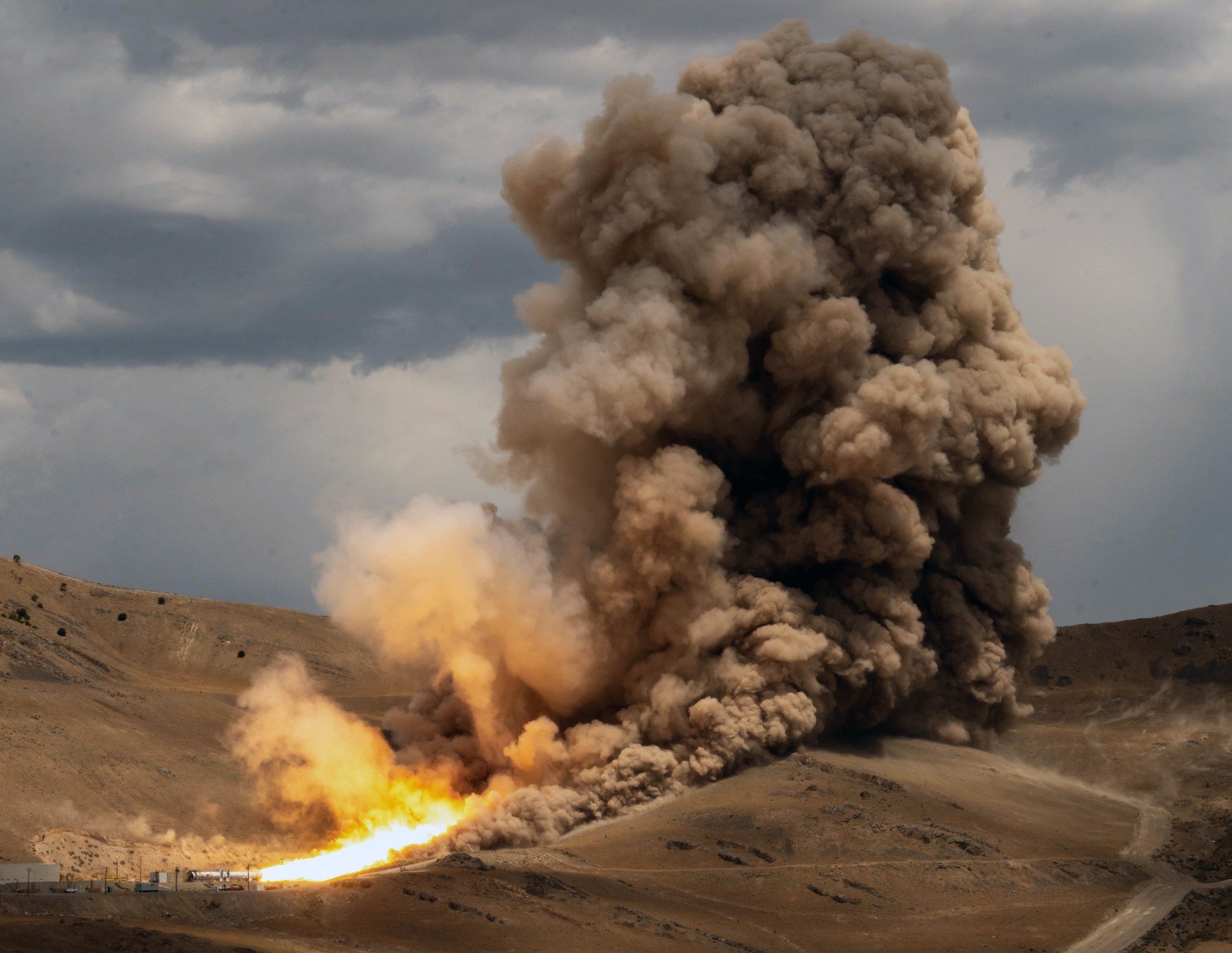
The test aids in the development of future versions of the solid rocket boosters for the SLS rocket. Based on the space shuttle solid rocket boosters, the SLS boosters are the largest, most powerful solid propellant boosters ever built for flight. Credits: Northrop Grumman
NASA and Northrop Grumman, the SLS booster lead contractor, are using the test data to evaluate improvements and new materials in the boosters for missions after Artemis III.
“The power we have felt from just a single booster motor here in Utah is just half of what we will feel for an Artemis launch,” said Dave Reynolds, SLS booster deputy manager at NASA’s Marshall Space Flight Center. “Artemis I is just the beginning of a new era of space travel, the work for future Artemis missions continues. Designing boosters for those future missions relies heavily on the data we get from these test firings because we are leveraging off of what we learn from these different materials and processes that are being used on the boosters for early Artemis missions.”
The latest booster firing demonstrated the performance of a new motor ignition system and thrust vector control system. It also tested new motor components, materials, and processes that may be used to replace obsolete materials and also in the development of the next generation boosters under the booster obsolescence and life extension effort that will support Artemis IX and beyond.
“Today’s successful FSB-2 test reaffirms our commitment to manufacturing the optimal solid rocket motors to support SLS and NASA’s Artemis deep space missions,” said Jeff Foote, senior director of NASA Programs, Northrop Grumman. “The initial demonstration of next-generation components enables us to acquire early learning for the boosters that will support the heavy-lift performance and greater payload capacities.”
The SLS rocket and NASA’s Orion spacecraft completed their final test for Artemis I, wet dress rehearsal, and engineers are preparing to launch and fly the rocket and spacecraft later this year. Through Artemis missions, NASA will land the first woman and the first person of color on the Moon, paving the way for a long-term, sustainable lunar presence and serving as a steppingstone for future astronaut missions to Mars.
Take 5 with Dr. Ruth Jones
By Daniel Boyette
Growing up in the small city of West Helena, Arkansas, Dr. Ruth Jones never dreamed of even knowing – let alone having a career as – a physicist or NASA employee. She went on to become both and has spent her career giving back to her hometown.
“I want to inspire the next generation to discover their passion and pursue their dreams,” said Jones, associate manager for the Human Exploration Development & Operations Office at NASA’s Marshall Space Flight Center. “I want to be that person who students can relate to and see themselves in me. That’s why it’s very important to me to go back to my former schools and do a science day to let students know the importance of education and career fields in science, technology, engineering, and math. Hearing about my success can give students from my hometown hope, confidence, and determination to do anything they put their minds to by working for it.”
Jones was the first female to receive a Bachelor of Science degree in physics from the University of Arkansas at Pine Bluff. She then attended Alabama A&M University and earned both a Master of Science and doctorate in physics/materials science, becoming Alabama’s second African American woman to receive a doctorate in physics.
“Since my career has afforded me to be instrumental to so many people, leaving a legacy is very important to me,” said Jones, who awards two scholarships annually to students attending her home church, First Baptist Church in West Helena. “To me, LEGACY means ‘Letting Experience Guide and Change You,’ and I want my experiences to guide and change everyone I meet. That’s why mentoring is dear to my heart … which is another way I give back, not only to my hometown but to anyone I meet.”
Question: What are your primary responsibilities as associate manager for the Human Exploration Development & Operations Office?
Jones: I provide direct support to the manager and deputy manager in the execution of the office, center, and mission directorate goals and objectives. This includes supporting activities related to organizational workforce planning and budget management by providing status and elevating issues to the office’s leadership team. I also perform assessments and provide initiatives to address the concerned areas.
Naturally, I have taken on the role of motivating and encouraging our team as they work hard on our missions and projects to meet deadlines. Something as simple as a “wellness check” email message or phone call goes a long way, and I hope it shows our team members I genuinely care about them and their well-being. Taking care of our team is very important to me because if the team is healthy – mentally and physically – we will be successful.
Question: Who or what led you to pursue an education/career in physics?
Jones: I’ve always had a passion for numbers and solving problems. I took accounting and physics my senior year in high school and loved them both. My initial major in college was accounting, where college algebra was the highest level of math that I needed for that curriculum. My college algebra professor, Dr. Miah Adel, saw my passion for solving problems and understanding of math, and he persuaded me to change my major to physics. However, he failed to tell me that there were no physics majors on campus. I owe my success in my career and in a male-dominated field – physics – to Dr. Miah because he observed my mathematical skills and potential. Even though I was the only physics major on campus, he taught class as if it was a room full of students … never cutting class short and providing plenty homework assignments, tests, and labs.
Question: How big of a role did your NASA co-op play in you having a successful career with the agency?
Jones: Being a NASA co-op was very instrumental to my success. The NASA co-op program provided me an opportunity to work within different organizations, which helped me find my niche and purpose, in addition to working with some of the best scientists/engineers at Marshall, such as Dr. Donald Frazier, Dr. Sandor Lehoczky, Dr. Ching Hua Su, Jim Bilbro, and Dr. Philip Stahl. I was fortunate to gain some awesome mentors, including the late E.C. Smith, along with Jim Kennedy, Tia Ferguson, Dr. Amanda Goodson, and Angelia Walker.
During my co-op tenure, I gained experience in crystal growth; optical coatings and optical components; replicated optics; electrical, electronic, and electromechanical parts; and physics/metallurgy, which laid the foundation for my NASA career.
Question: Who or what drives/motivates you?
Jones: My family is my greatest motivation, especially my younger nieces, nephews, and cousins. I am motivated by the fact that I’ve helped make a difference in the lives of my family. Seeing the smiles on their faces and watching them grow and improve their lives makes me exuberant. I want them to know that with a good education, a solid goal, and an unfaltering determination, the sky is the limit.
I was a supervisor for four years, and the one thing that makes all of the challenges worthwhile is seeing my team grow and advance. I genuinely enjoy coaching and harnessing the potential of constructive feedback. When I am able to help a struggling employee start exceeding expectations, or a thriving team member take the next step in their career, I am always elated. That’s what sustains me at work, and it will likely do so for the rest of my career.
The gratification of overcoming obstacles is another motivator. I use the obstacles I’ve encountered as fuel to launch me into success. The feeling of accomplishment that comes with exceeding challenging goals is what drew to me a STEM career and how I have continued to succeed in a male-dominated field.
Question: Do you have any advice for those who are early in their careers with NASA?
Jones: Become the CEO of your life by having a personal board of directors – three to five people, such as a true friend, a mentor, a connector, a sponsor, and a point expert. Most people have a mentor and true friend, but rarely do people have a connector, a sponsor, and a point expert. The latter three are very important in having a successful career. Connectors know everybody and can pick up the phone on your behalf. Sponsors are your advocates and have a seat at the table; they will speak to your skills and abilities in your absence. Point experts are your go-to people, and they have all the answers and are willing to share the information with you to elevate you professionally and personally.
Also, diversify your skills by doing details and special assignments throughout the agency.
Finally, gain experience outside of your expertise by taking advantage of opportunities for improvement.
Boyette, an LSINC employee, supports Marshall’s Office of Strategic Analysis & Communications.
I am Artemis: Terry White
By Alyssa Lee
Terry White’s introduction to the arts happened at the age of 5 when he watched his mother sketching at the dinner table. He never thought that love of art would lead him to a career at NASA.
White is lead animator and illustrator for NASA’s Space Launch System (SLS) program at the agency’s Marshall Space Flight Center.
Inspired by his mother’s talents, White asked her to teach him how to draw. His passion for drawing grew into creating and selling his own watercolor paintings. White received his diploma in graphic arts at J.F. Drake State Community and Technical College in Huntsville, and he started his career as an illustrator in the aerospace industry. During a seven-year period at Boeing, he created illustrations and watercolor paintings for the Space Station Freedom Project that evolved into the International Space Station.
White started his NASA career 20 years ago. Now, creating artwork for the Artemis missions – NASA’s next era of human exploration to the Moon and eventually to Mars – is a dream come true for White.
“I have always wanted to work in the space industry, and I love what I do,” said White, who is responsible for creating 3D animations, digital 3D models, and multimedia presentations for the SLS program.
White turns technical blueprints and pencil drawings into accurate, scaled digital 3D models used for posters, infographics, engineering documents, presentations, augmented reality, websites, animations, videos, and more. A recent example of White’s work can be found on Snapchat, through the “NASA Experience” filter. This filter brings to life an augmented reality model of the SLS rocket on your phone screen, which you can view from every angle.
“My favorite model I have built thus far is the SLS rolling out of the Vehicle Assembly Building, months before the initial Artemis I rollout event occurred,” said White. “When I was working on it, I was focused on the task at hand, but when I saw the videos of the real rocket rolling out, it hit me that the challenging work I put in shows.”
The models and animations White created looked so realistic that even some SLS engineers had a hard time telling the difference between the animations of the rollout and the video of the actual rollout event in March 2022.
White works with SLS engineers to make sure the models he creates are as accurate as possible. “I love building something new that has never been attempted and making it look as real as possible,” said White. “I am always looking forward to the next project.”
Lee, a Media Fusion employee, supports Marshall’s Office of Strategic Analysis & Communications.
Jacobs’ Steve Arnette Discusses Corporate Culture of Safety, Norman Thomas Presented Golden Eagle Award
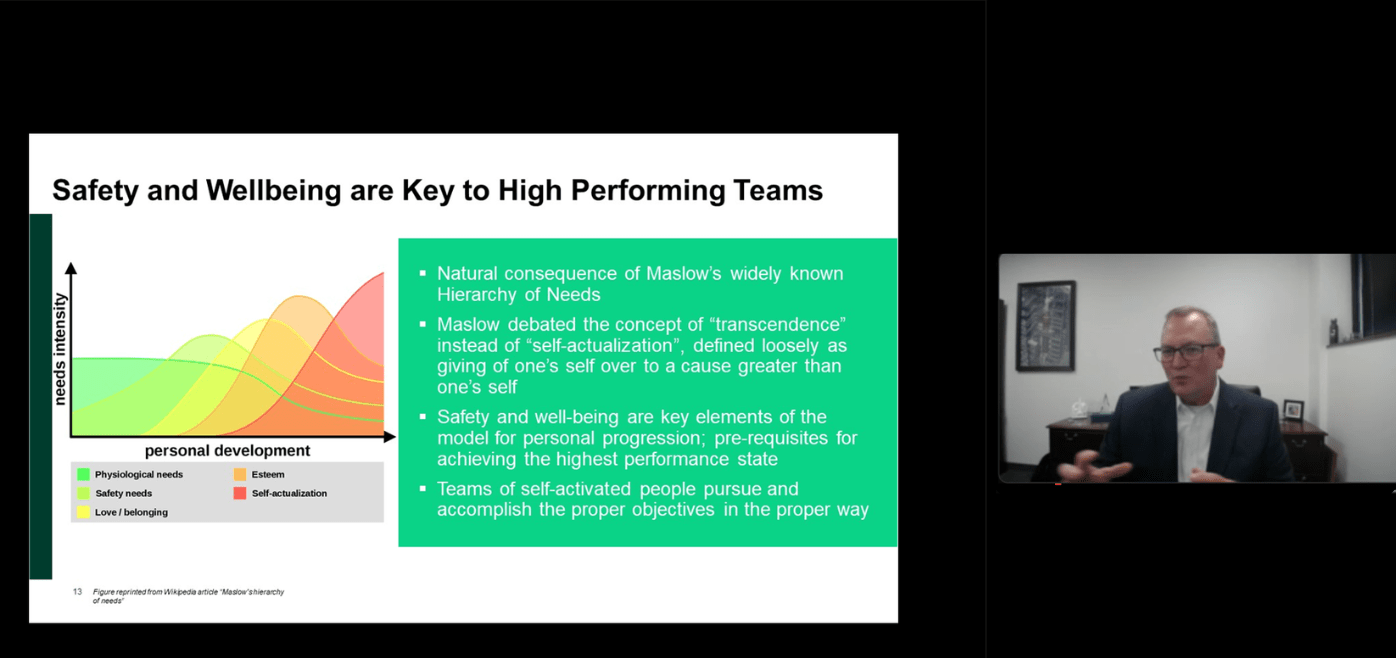
Dr. Steve Arnette, a senior vice president in Jacobs’ Critical Mission Solutions, addresses team members of NASA’s Marshall Space Flight Center during a virtual Mission Success is in Our Hands Shared Experience Forum on July 21. Arnette leads Jacobs’ Advanced Engineering, Research, and Operations business, which has responsibility of the company’s support for NASA and its exploration programs. He discussed how the BP Texas City refinery explosion in 2005, in which 11 Jacobs employees died, led to the company developing its BeyondZero safety program. “We enlisted the leaders of the company and our employees in finding a new and better safety culture,” Arnette said. “It wasn’t about more written processes. It wasn’t about needing a stronger safety and mission assurance department. It was about getting leaders actively engaged in truly owning this as the most critical part of their job. And not just the leaders. We realized it had to extend to every employee on our team.” The goal of Mission Success is in Our Hands is to help team members make meaningful connections between their jobs and the safety and success of NASA and Marshall missions through shared experiences discussions, awards, and recognition. Former astronaut Jan Davis is scheduled to be the next speaker Oct. 20. (NASA)
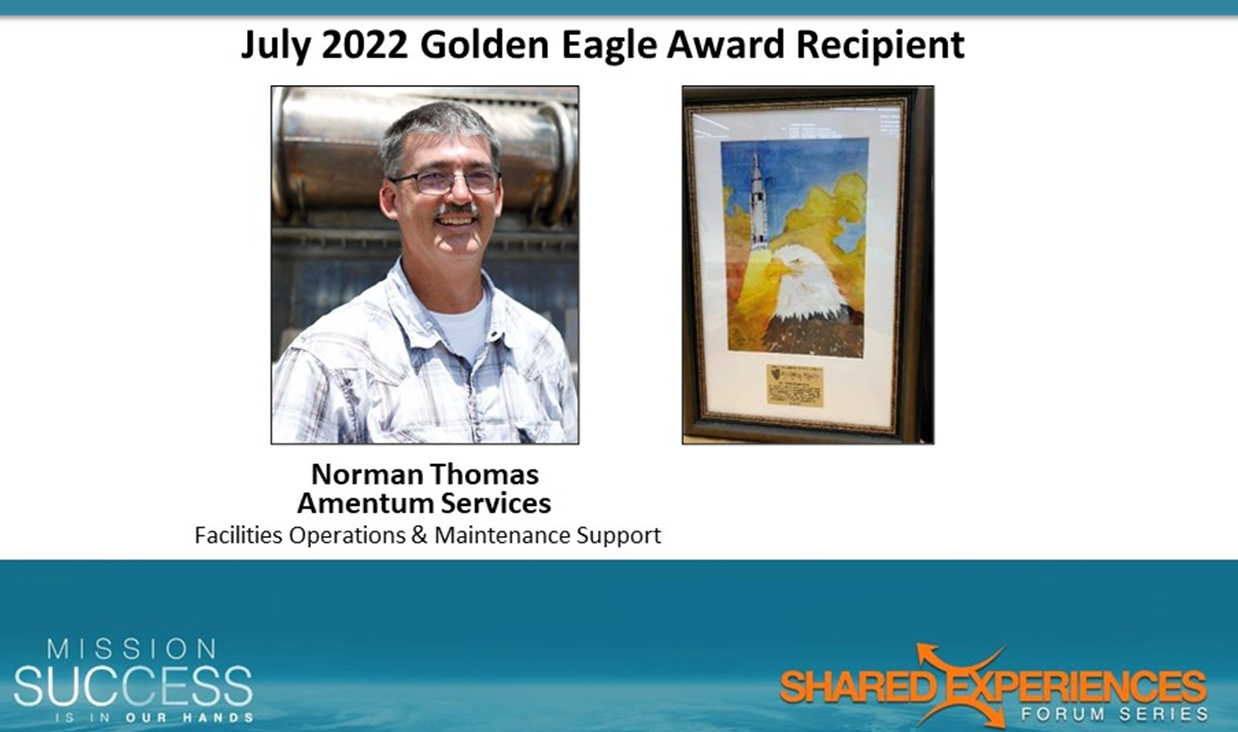
Prior to Arnette’s presentation, Norman Thomas received the Golden Eagle Award. Thomas, an Amentum Services employee, leads quality and safety operations for the Facilities Operations and Maintenance Support Services contract at Marshall. He recently led an investigation into a serious close-call incident at a loading dock. He formed a team to review the dock configuration and develop short-term and long-term corrective actions. The Golden Eagle Award is presented to team members who make significant, identifiable contributions to flight safety and mission success. Nominations for future Golden Eagle awards can be submitted here. (NASA)


























